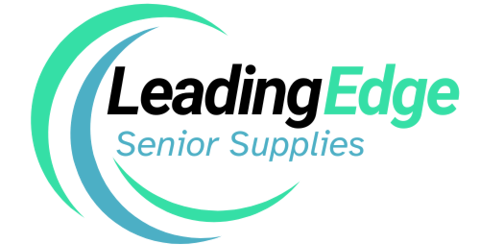How Smart Technology Is Changing Senior Health Monitoring
How Smart Technology Is Changing Senior Health Monitoring
Aging gracefully has taken on new meaning in a world driven by innovation. What once required frequent doctor visits and manual recordkeeping can now be monitored in real time, all from the comfort of home. For seniors, this shift is transformative. Smart technology is not just advancing healthcare—it is redefining what independence, safety, and well-being mean in later life. Through wearable devices, remote monitoring systems, and intelligent health apps, seniors today can live with a sense of control and security that was once unimaginable.
Technology, when designed with empathy and precision, has the power to bridge gaps between generations, between doctors and patients, and even between fear and confidence. For older adults navigating complex health conditions, this connection can make all the difference.
The Evolution Of Health Monitoring For Seniors
Traditionally, senior health monitoring relied heavily on scheduled checkups, in-person observations, and paper-based tracking. While effective to a degree, this approach often left gaps in care. Health changes can occur suddenly, and for those living alone, subtle warning signs may go unnoticed until it’s too late. The advent of smart technology has revolutionized this process by creating continuous, real-time communication between the senior, their loved ones, and healthcare professionals.
Modern devices like wearable sensors and smartwatches now track vital signs such as heart rate, oxygen levels, and sleep quality around the clock. These metrics are transmitted securely to caregivers and medical teams, who can detect patterns or abnormalities early. What once required a hospital monitor can now happen quietly, seamlessly, and safely at home.
This evolution represents more than convenience—it represents empowerment. Seniors no longer have to wait for health crises to act. Instead, technology enables proactive care, turning prevention into a daily habit rather than a distant goal.
The Emotional Reassurance Of Connected Care
While the technical benefits of smart monitoring are clear, the emotional impact may be even greater. Many seniors fear losing independence or becoming a burden to loved ones. Health monitoring technology helps dissolve that fear by providing a safety net that feels both protective and respectful.
Devices such as fall detection sensors, medication reminders, and emergency response systems allow seniors to remain in their own homes with confidence. Families, in turn, find peace of mind knowing they can receive instant alerts if something goes wrong. This mutual reassurance strengthens relationships rather than replacing human connection.
Technology, when used with compassion, doesn’t isolate—it connects. Seniors often feel more secure and less anxious knowing that help is accessible at the press of a button. These systems become quiet companions, offering stability in the background of daily life.
Moreover, smart health platforms often encourage engagement and routine. Many systems are designed with user-friendly dashboards that display daily wellness summaries, gentle reminders to hydrate or move, and motivational messages. These small details reinforce a sense of participation in one’s own care, turning data into empowerment and routine into reassurance.
How Smart Devices Support Chronic Health Management
For seniors managing chronic illnesses such as heart disease, diabetes, or COPD, technology has become a vital lifeline. Remote health monitoring tools can track fluctuations in blood pressure, glucose levels, and oxygen saturation, instantly alerting medical professionals to any concerning trends. This continuous feedback loop enables faster adjustments to treatment plans, reducing the risk of complications and hospital readmissions.
The integration of artificial intelligence within these systems has elevated care even further. AI-powered platforms can analyze thousands of data points, identifying subtle changes that the human eye might miss. These predictive insights allow for early intervention—often before a symptom becomes visible.
Beyond physical health, technology is beginning to address mental well-being as well. Some smart devices now measure stress levels, monitor sleep cycles, and suggest relaxation techniques, helping seniors manage anxiety or restlessness. Others include cognitive engagement features, offering memory exercises and mood-tracking tools that promote brain health.
This fusion of medical precision and emotional care reflects a more holistic approach to aging. Seniors are no longer passive patients—they are active participants in their health journey.
Independence Through Innovation
One of the greatest fears seniors face is losing their independence. Smart health monitoring offers a gentle solution that supports freedom without sacrificing safety. Instead of feeling watched, seniors feel empowered, knowing that technology exists not to control but to support.
Through non-invasive sensors and adaptive interfaces, these devices integrate naturally into daily life. They learn habits, recognize patterns, and provide tailored recommendations that evolve with the user’s needs. For example, a senior recovering from surgery might receive adaptive movement reminders, while another managing a heart condition could get alerts to rest or hydrate. This personalization transforms health monitoring from a mechanical task into a relationship—one between human and technology, built on understanding.
The ripple effect of this innovation is profound. Seniors who once hesitated to live alone now do so confidently. Caregivers experience relief, knowing that support systems are constantly at work. Even healthcare systems benefit, as remote monitoring reduces emergency visits and improves long-term health outcomes.
The Future Of Senior Health Monitoring
The future of senior care is one where compassion and technology move hand in hand. As devices grow smarter and more intuitive, they will continue to dissolve the barriers between aging and autonomy. The focus will shift from managing illness to promoting wellness, from treating decline to celebrating longevity.
Every heartbeat tracked, every alert sent, and every reassurance delivered represents more than data—it represents dignity. Seniors deserve to live fully, securely, and without fear, and smart technology is making that possible. It brings clarity to the unseen, comfort to the anxious, and independence to those who once doubted it could be theirs again.
In the quiet rhythm of a monitored pulse and the steady hum of connected care, the future of aging is already here—and it’s compassionate, intelligent, and deeply human.

